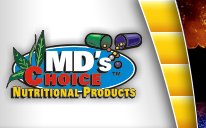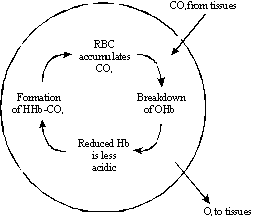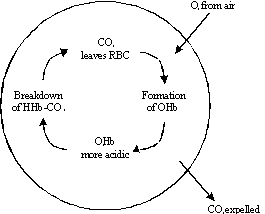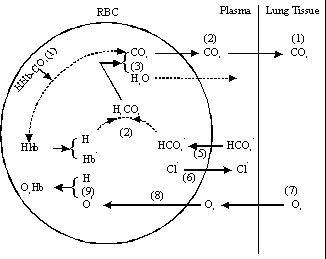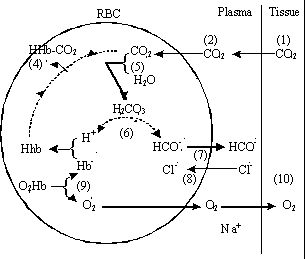![]()
| Sodium, Potassium & Chlorine |
Physiological Roles
Maintenance of intra- and extracellular concentrations of Na+ and K+
Regulation of Na, Cl, and K
Dietary requirements (% of dietary DM)
Sources of Na, Cl, and K
Dietary Cation-Anion Difference (DCAD)
Deficiency
Toxicity
- Sodium
- Predominant cation in extracellular fluid.
- Osmotic relationships, fluid volume
- Acid-base balance, pH
- Contributes to hardening of outer layers of bone
- Active transport of glucose across the intestinal mucosa requires movement of Na in the same direction
- Many enzyme systems function in an Na environment
- Maintenance of electrical activity of body cells
- Maintenance of muscle and heart contractions
- Predominant cation in extracellular fluid.
- Potassium
- Principal intracellular electrolyte
- Osmotic relationships, fluid volume
- Acid-base balance, pH
- Carbohydrate metabolism
- Peripheral uptake of glucose by cells
- Some enzymes require K for glycolysis and oxidative phosphorylation
- Secretion of insulin and glucagon
- Several vital processes are controlled by release of K+ from cells through channels
- Transmission of nerve impulses
- Endocrine and exocrine secretions
- Principal intracellular electrolyte
- Chlorine
- Predominant anion in extracellular fluid
- Osmotic relationships, fluid volume
- Acid-base balance, pH
- Maintenance of electrical homeostasis
- Chloride-bicarbonate shift in O2 and CO2 transport by RBC (See figures 1-4.)
- Activation of intestinal amalyase
- Gastric juice
- Predominant anion in extracellular fluid
| During Respiration, Two Reactions Occur Simultaneously in the Tissues and in the Lungs | ||
Figure 1. O2 and CO2 Transport By Red Blood Cells in Tissues
|
||
Figure 2. O2 and CO2 Transport By Red Blood Cells in Lungs
|
| Figures 3. & 4. Chloride-Bicarbonate Shift | ||
|
||
|
II. Maintenance of intra- and extracellular concentrations of Na+ and K+
- Na is pumped out of K+ is pumped into the cell by Na, K-ATPase, and enzyme located in the cell membrane
- The enzyme transfers 3 Na+ to the extracellular fluid for each ATP molecule hydrolyzed
- This occurs in exchange for 2K+
- Suboptimal Mg+2 intake decreases Na, K-ATPase activity (J. Nutr. 117:2091, 1987)
- Mechanism of Na, K-ATPase
III. Regulation of Na, Cl, and K
- Close regulation of Na, Cl, K concentrations is necessary for health
- Regulation of concentrations of these elements involves two main processes:
- Control of intake
- Control of loss from the body
- Absorption of these elements from GI tract is essentially complete (not a control)
- Conservation and excretion of excess Na, K, and Cl is controlled primarily by the kidney
- Rennin is secreted in response to a decrease in interstitial fluid volume or blood pressure, both of which are sensitive to decreased Na
- Rennin cleaves a leucine-leucine bond on a circulating az globulin to liberate angiotensin I
- The highly active vasopressor angiotensin II is formed from angiotensin I by angiotensin converting enzyme which is zinc dependent (Biochem. Pharmacal 20:1637, 1971; J Nutr. 116:128, 1986)
Angiotensin II stimulates adrenocortical secretion, primarily aldosterone - Effects of aldosterone:
- Increased retention of Na, Cl, and H20
- Increased kidney resorption
- Increased intestinal absorption
- Reduced loss in sweat
- Increased excretion of K
- Decreased Na+ uptake by cells
- Increased retention of Na, Cl, and H20
- Aldosterone is also stimulated by excess K intake
- Excess K can be transferred from extracellular to cellular spaces where it is less harmful
IV. Dietary requirements (% of dietary DM)
|
Ruminants |
Nonruminants |
Na |
.1 - .2 |
.1 - .2 |
Cl |
.1 - .15 (.28 lactating cows) |
.1 - .15 |
K |
.6 - .8 (>1 under heat stress) |
.2 - .4 |
V. Sources of Na, Cl, and K (J Dairy Sci 69:595, 1986)
Feedstuff |
|||
Grains and Byproducts |
% K |
% Na |
% Cl |
High in Na Corn gluten feed |
0.64 |
1.05 |
0.25 |
Medium in Na Brewers grains |
0.09 |
0.23 |
0.17 |
Low in Na Barley |
0.47 |
0.03 |
0.18 |
Forages and roots Mangels (beets) |
2.30 |
0.63 |
1.41 |
VI. Dietary Cation-Anion Difference (DCAD)
- Acid-base balance is affected by intake and excretion of fixed cations (Na+ and K+) and anions (Cl-, SO4-)
- DCAD = (meq Na + meq K) – (meq Cl + meq S)
– 100 g DM - Mongin ratio = (meq Na + meq K) – (meq Cl) is frequently used with poultry
– 100 g DM - Acid-base balance, as reflected by DCAD of Mongin ratio, appears to be related to performance
- With dairy cows, maximal DM intake and milk yield occurred with +38 mEq/100 g DM
- Magnitude of response differences was small, between +25 and +50
- A Mongin ratio near +40 appears to be optimum for feed intake and growth of poultry
- It may be desirable to lower DCAD to a minus value for dairy cows for a 2-3 weeks before calving to reduce incidence of milk fever
- Calculation of DCAD using NRC recommended intakes of Na, K, Cl, and S in the diet
DCAD = (7.8 + 23.0) – (7.05 + 12.47) = 11.28Na K Cl S Atomic Wt (g)
Equivalent wt (g)
mEq
MEq/g ( 1/mEq)
% element in diet
g element/100 g diet
mEq/g element
mEq element/100 g diet22.991
22.991
0.022991
43.495
0.18
0.18
43.495
7.839.1
39.1
0.0391
25.575
0.9
0.9
25.575
23.035.457
35.457
0.035457
28.203
0.25
.025
28.203
7.0532.066
16.033
0.016033
62.371
0.2
0.2
62.371
12.47 - Sources of minerals to alter DCA
Cations Anions NaHCO3 (27.37% Na)
Na2CO3 (43.38% Na)
KCHO3 (39.05% K)CaCl2 • 2H2O (48.23% Cl)
MgCl2 • 6H2O (34.88% Cl)
MgSO4 (26.64% S)
CaSO4 (23.55% S)
CH4Cl (66.28% Cl)
- Symptoms of deficiency
- Sodium
- Salt craving
- Appetite loss
- Decreased gain or weight loss
- Unthrifty appearance
- Reduced milk yield
- Chlorine
- Appetite loss
- Decreased performance
- Lethargy
- Dehydration
- Polydipsia
- Polyurea
- Reduced respiration rate
- Cardiovascular depression
- Alkalosis
- Potassium
- Appetite loss
- Decreased water intake and urinary output
- Weight loss
- Reduced milk yield
- General weakness
- Sodium
- Factors increasing Na requirement (could contribute to development of an Na deficiency)
- Inadequate intake
- Excessive sweating
- Heavy lactation
- Excessive gastrointestinal losses during diarrhea or vomiting
- Excessive urinary loss due to reduced Na resorption or renal insufficiency
- Adrenocortical failure
- Conditions which could contribute to Cl deficiency
- Failure of normal kidney function to conserve body Cl
- Excessive loss in vomiting
- Ingestion of diuretics
- Sequestration of HCl in a displaced abomassum (dairy cow)
- High grain supplemented with excess NaHCO3 (dairy cow)
- Concentrate feeds are usually low in Cl
- Feeding of high concentrates to ruminants is often accompanied by feeding of bicarbonate buffers
- Excess bicarbonate could increase blood bicarbonate sufficiently to produce alkalosis
- Potassium deficiency may be caused by:
- Inadequate K intake
- High salt consumption
- GI losses
- Stressful conditions
- Sodium and Chloride
- Effects of large excess of salt consumed in water
- Hypertonicity of extracellular fluid
- Increase in body fluid volume
- Intracellular dehydration
- Death (concentration by kidney < concentration in fluid ingested)
- Cattle can tolerate a comparatively high amount of salt in dry feed
- Effects of large excess of salt consumed in water
- Potassium
- Ruminants can tolerate high dietary K without immediate effects as long as plasma K+ concentration can be kept within normal limits by excretory and other mechanisms.
- Cows can consume >500 g of K daily as alfalfa hay
- Organic acids in fresh grass reduce tolerance of cows to K
- High K content of early spring pasture can reduce Mg absorption and utilization
- High K intake can contribute to edema and milk fever in dairy cows
- Nonruminants are likely to vomit before ingesting amounts of K too great to permit regulation by storage and excretion
- Ruminants can tolerate high dietary K without immediate effects as long as plasma K+ concentration can be kept within normal limits by excretory and other mechanisms.
![]()

For individual consultation or questions about our products, call
1-800-628-0997
Click Here for a Printable Version of This Page
